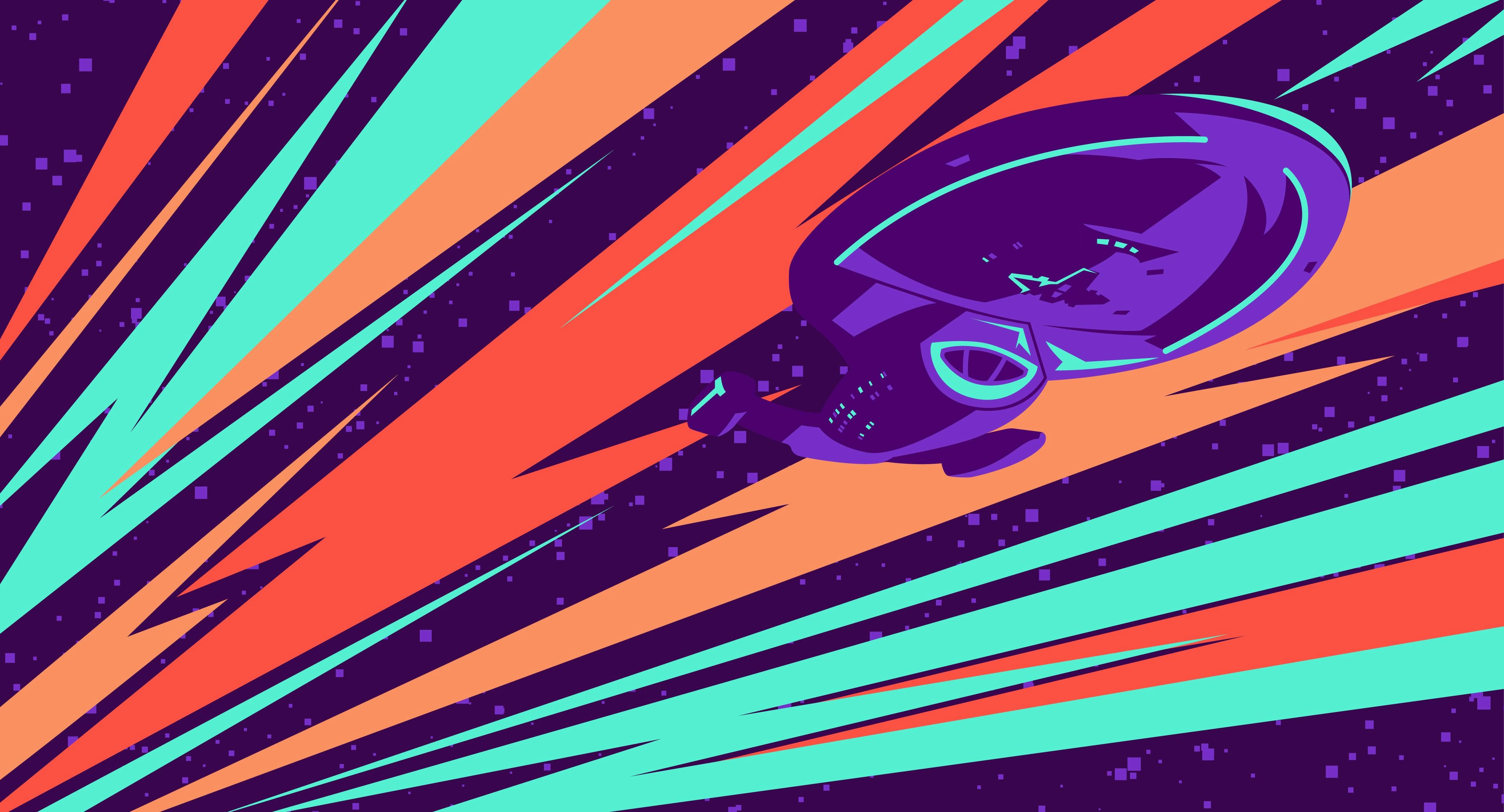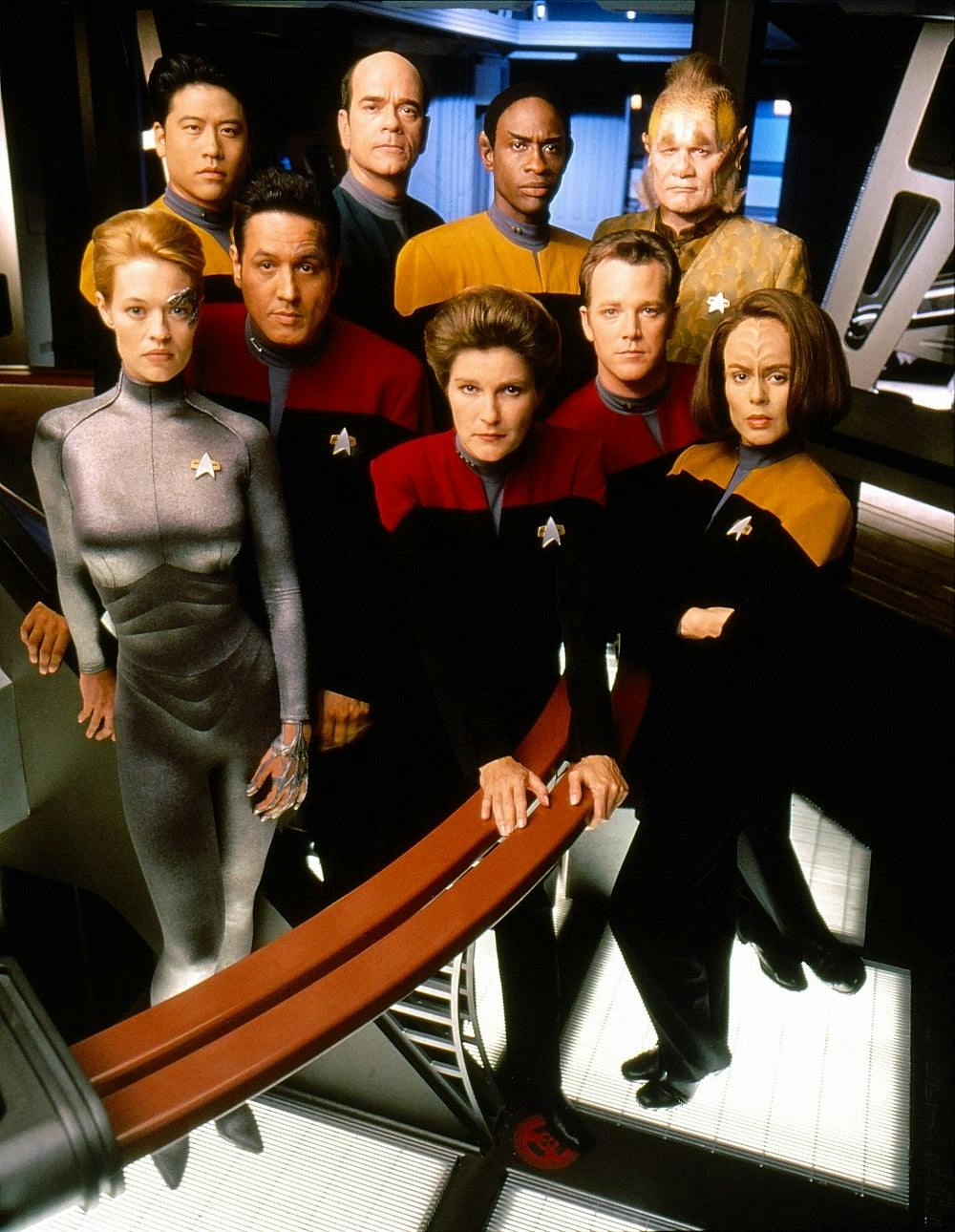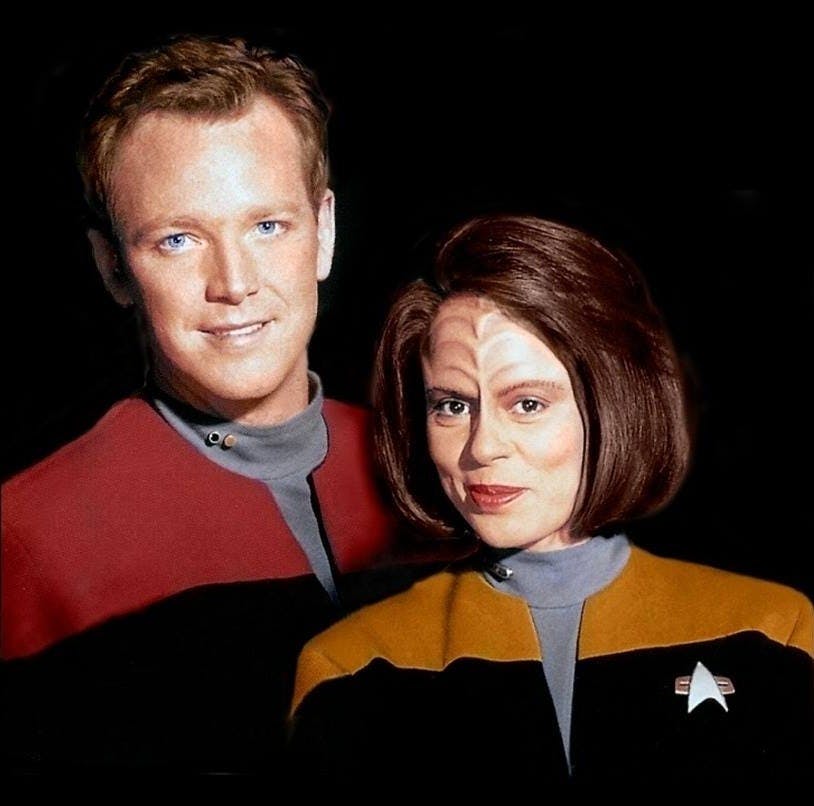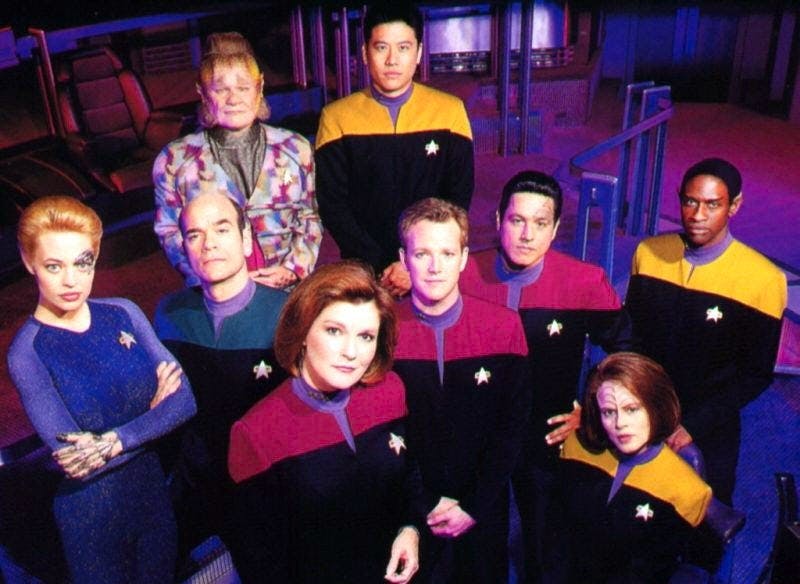Published Aug 2, 2021
Star Trek: Voyager and the Power of Female Friendship
How Voyager shaped one fan's journey with her female friends

StarTrek.com
I was introduced to the Trek franchise by my nanny when I was five. Most of the show went over my head, but I was instantly thrilled by the idea that they were having adventures in space. In short order, I became the kind of kid who used words like “extrapolate” and “space-time continuum” in everyday conversation. While this proclivity did not endear me to the cool kids, it left me open to the enriching female friendships that have graced every era of my life via a shared love of Trek.
I didn’t have to introduce my earliest Trek friend, cartoonist Dylan Meconis, to anything. She and her parents were as obsessed as I was. Our families got together every Friday evening and Dylan and I would often compare notes about the week’s episodes.
Ever the storytellers, we created our own role playing game: a hybrid between Trek and the X-Men, in which one of our chief enemies was a sentient computer virus called “47.” My character was a telepath, and Dylan extracted significant mirth from constantly pointing out that she was, “basically Deanna Troi with more offensive weaponry."
She made painstaking drawings of each of the characters in our little universe and one of the true delights of my young life was watching her skill as an artist develop with every subsequent portrait.

StarTrek.com
Starting in sixth grade, when Voyager hit the airwaves, my two closest friends at school were Elizabeth and Angelica. They were fifth graders and we might not have connected at all had I not I overheard them giggling at recess over the notion of needing to take a piece of cheese to sickbay. I dropped right into the conversation with what I hoped was a clever comment about bioneural gel packs and our fates were sealed.
For the rest of my middle school days, we would scream-laugh every Thursday as we shouted lines from the previous night’s episodes to one another in the hallways; at one point getting into real trouble when our math teacher told us to stop making such a racket and I called him a “freakasaurus,” Rain Robinson style.
Dylan, Elizabeth, and Angelica were some of the first people in the world to hear about my dual obsessive crushes on Captains Janeway and Picard. Bisexuality wasn’t as commonly understood in the 90’s as it is today, but their chief concern was not gender but that they saw both characters as “old” (especially Picard) and found my dreamy-eyed swooning more than a little shocking.
I lost contact with Elizabeth and Angelica when I moved on to a strict all-girls Catholic high school in the fall of 1997. It was there that I met Nikki, who had never seen Star Trek. Thankfully, I had taped every episode of the first three seasons of Voyager and was able to bring her up to speed.
Nikki shipped Paris and Torres long before the writers were even hinting at a relationship between them. Being from a nice Catholic family, she was taken aback by my Janeway obsession but tried to be a good sport about it. When she moved away after our freshman year, we stayed in touch for an unusually long time by writing letters on Thursdays documenting our weeks and our thoughts about the previous night’s episode.

StarTrek.com
Sadly, the community at her new school was much more homophobic than our school had been, and we drifted apart as she formed stronger opinions about my interest in Captain Janeway. I don’t know if she finished watching Voyager or what she thought about how it ended, but it makes me sad that someone who could embrace a show that was so high-minded could also embrace such awful ideas about who people should and should not be.
I graduated high school the year that Voyager’s last episode aired and did not have access to a television to watch Enterprise with any reliability in college, so my Trek obsession entered a period of dormancy until the birth of Netflix. It was then that I began a rotating re-watch of all three of my nostalgic Trek shows, starting with TNG, moving into DS9, and finally Voyager before repeating the cycle.
It was during that time that I met Eva. We quickly bonded not just over Trek, but also a shared ethnic identity and an interest in music. I will always have fond memories of the nights we spent playing music, watching Star Trek and then playing more music. Eva taught me how to look up chord charts online; a skill that has much enriched my life and always makes me think of the endless library of information, musical and otherwise, that Trek predicted we would someday have at our fingertips.
As sometimes happens to female friendships in a world where we are forced into boxes to survive, Eva and I came apart because of judgementality. She had a blessedly happy childhood and was big on self-reliance. She never could get her arms around how “weird” and “needy” I was; descriptors that I later learned could be attributed to my myriad of mental health disabilities, including then-undiagnosed autism and complex post-traumatic stress.
People are always entitled to choose their friends, but as with Nikki, my experience with Eva made me sad that someone who gravitated towards a franchise that embraced a diversity of experiences had so little capacity to tolerate it in her own life.

StarTrek.com
As for the present? At the moment, I’m sharing a re-watch of Voyager with two first-timers. Both of them, Kelly and Kim, are wonderfully weird in their own special ways, and they thoroughly embrace all aspects of who I am, which is a prerequisite for all of my friendships these days, Trek-based or otherwise.
We watch Voyager over Zoom every Sunday night and discuss what we’ve watched afterwards. This has offered me both camaraderie in a time of distance and loneliness and fresh perspective on media that I have loved uncritically for so long.
As of this writing, we are just getting into season two. Thus far, we’ve spent a great deal of time discussing Neelix in particular. It wasn’t until I saw the show through their eyes that I realized how problematic it was for a guy in his 30’s to be dating a two year-old of any species, regardless of how chaste their kisses were or how many decks separated their quarters! Their fresh perspectives helped me see that I had been operating from the 1990s-flavored assumption that Kes’ short life span and accelerated development meant that they were on a level. But as Kim pointed out, it’s not far from that logic to saying it’s okay for men in their 30’s to date teenage girls because “girls mature faster” and teens can sometimes look older than they really are.
These conversations are helping me gain fresh insight into the media that shaped my worldview during young adulthood. I’m so looking forward to seeing what they make of the rest of the series!
Throughout my life, these female friendships — mediated by Trek — have offered me perspective and helped me receive and share stories in ways that are less clouded by heteronormativity and the male gaze. I am immensely grateful for every moment.
Tae Phoenix is a singer / songwriter, actor, and activist based in Seattle, WA. They are currently Kickstarting a new EP, running a Trek-based voting rights project called Trek the Vote for Fair Elections, and serving as resident music leader for the Washington State Poor People’s Campaign.

